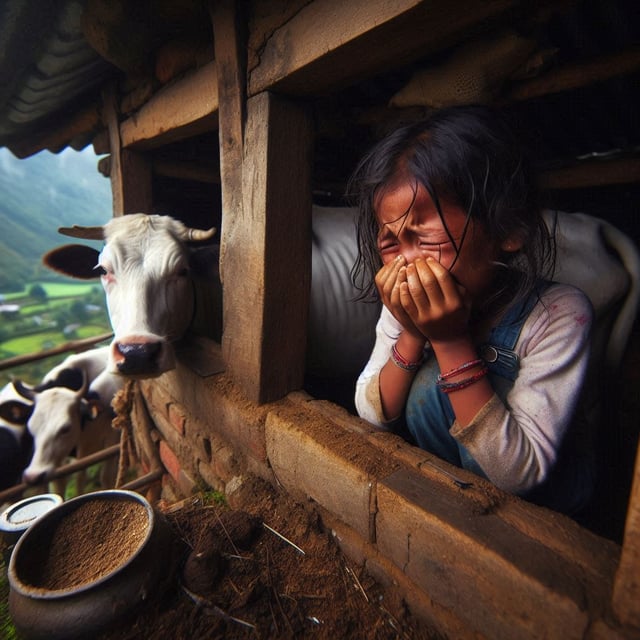The Tigers of Nepal are Flourishing Again

Tigers, one of the largest carnivorous mammals in Asia, are considered splendorous beasts with their distinct orange and red stripes. They have been hunted since the early 16th century, an act of heroism by vilifying them as the bloodthirsty beasts that kill humans and their livestock.
Between 1846 and 1940, Chitwan in south-central Nepal, remained a hunting reserve for the feudal Rana dynasty, where tigers, rhinos, leopards, and other animals were hunted.
In 1911, King George the V traveled to the plains of Nepal slaying 39 tigers in 10 days, this occurred at a time when the government was encouraging hunting in order to promote human settlement.
However, people were not keen on migrating to the plains due to widespread malaria,
and in 1954, the United States aid mission was initiated, and by the 1960s malaria was brought down to an insignificant level and made settling in the plains of Nepal desirable.
Tigers as a whole have lost 95% of their historical range and are on the brink of extinction.
In 1973, the government formulated the National Parks and Wildlife Conservation Act, lending rise to an era where wildlife started being valued and finally protected. They started with the creation of Chitwan National Park that same year.
Finally, as the forests started to deplete, the government formulated the National Forestry Plan (1976) which was followed by the National Forest Policy Act of 1976 where laws and policies emphasized ecological balance and economic development.
There were only 40 breeding tiger adults in the 1980s which grew to be around 125 breeding adults in 2010 in Chitwan National Park. Between 2009 and 2013 the Tiger population grew by 63% securing a population of 198 which is far more than the tigers in Bhutan and Bangladesh.
In 2010, world leaders met during the Chinese Year of the Tiger and made an ambitious goal to multiply their tiger population (TX2) by the next Chinese Year of the Tiger in 2022.
Since 2013, WWF-Canda supported Nepal in its conservation projects of tigers and Nepal became the first country on track to achieve the ambitious TX2 goal. The population of tigers in Nepal reached 355.
Nepal has nearly tripled the number of tigers in the country since 2010.
Bardiya National Park of Nepal and Sathyamangalam Tiger Reserve of Tamil Nadu, India won the TX2 Award for doubling their wild tiger population.
There was growing doubt that Nepal could double its population due to the limited tiger habitat. However, Nepal also worked to expand the tiger habitat from 4,503 km^2 before 2010 to 6,206 km^2 after 2015 which helped the efforts tremendously.
Traditionally, the indigenous Tharu villagers slashed and burned the patches of tall grassland, which allowed the growth of fresh grassland, and now this indigenous knowledge is used as it is vital for conservation efforts.
As the tiger population grows there have been sightings of tigers in the mountainous range both in western Nepal as well as in eastern Nepal.
As the tiger population increased, tiger attacks also increased. These attacks have led to protests about safety from wildlife. against tiger attacks.
There are also accusations that tiger-centric conservation pushes other predators to the fringe, as the tiger-centric grassland ecosystem is not suitable for all animals.
Nepal’s Environment Minister Birendra Mahato caused outrage when he suggested creating open bidding and allowing the highest bidder to hunt tigers for a month every four to five years. He argued that $25 million for every tiger killed and only five tigers would easily cover the environment ministry’s total budget for a fiscal year.
There are still some incidents where smugglers are caught with tiger skins, which proves, that the tigers aren’t completely safe.
Tigers are the supreme predators of Nepal, and it’s clear that a balance needs to be found so human attacks are decreased and livestock is kept safe while ensuring the tiger population stays up.
Note: The image is a mixed work created by Kripendra Amatya
Sources of Original Photos:
https://commons.wikimedia.org/wiki/File:Bengal_tiger_roaring.png
https://commons.wikimedia.org/wiki/File:THE_MAJESTIC_ROYAL_BENGAL_TIGER.JPG
Author
Kripendra Amatya, Researcher, Nepa~laya Productions
Editor
Dana Moyal Kolevzon, Director of International Relations, Nepa~laya Productions
Published Date
January 1, 1970



